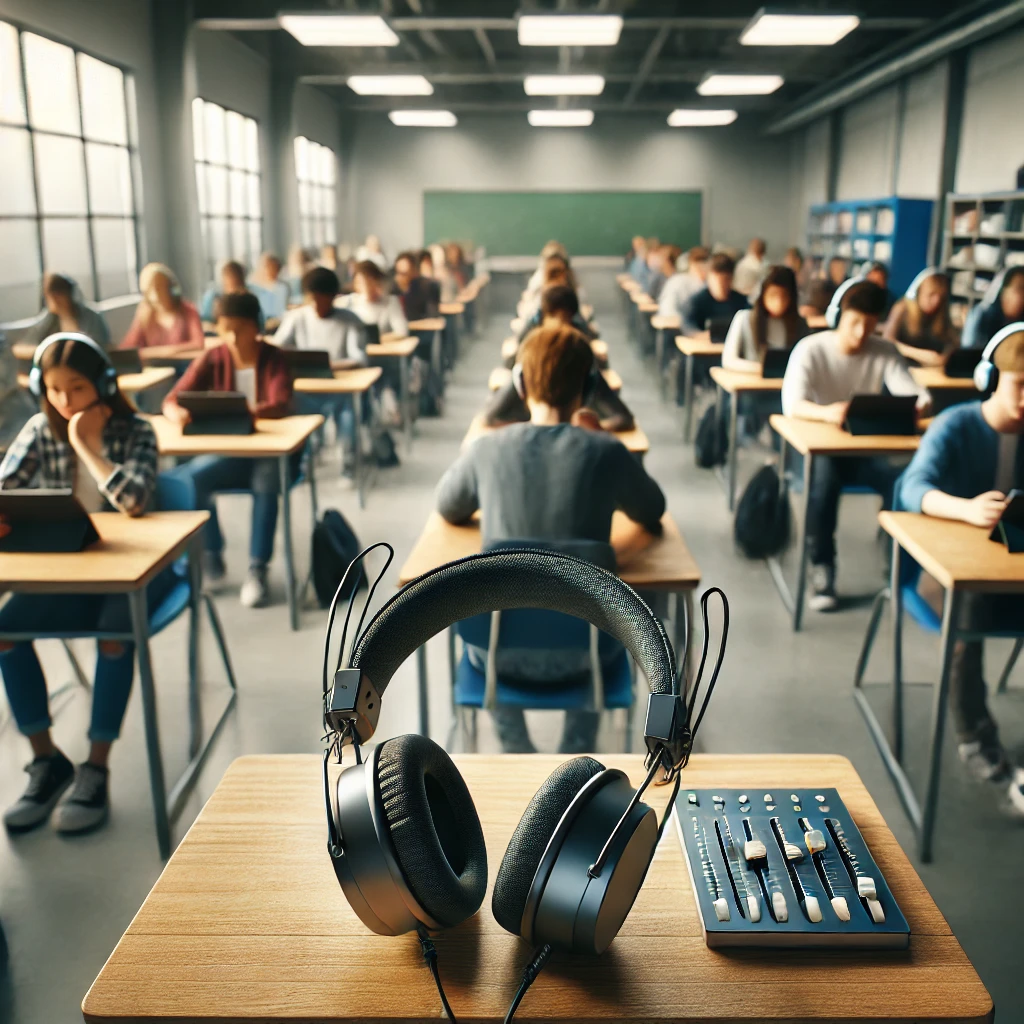Beginning
In a classroom setting, the correct pair of headphones may really change things. Finding the best headphones for classrooms is very important whether you are a student wanting a better approach to concentrate in class or a teacher trying to use a more engaging learning environment. This article will discuss the important aspects to take into account while choosing headphones for educational environments, evaluate a few of the best options now available, and address some commonly asked issues to assist you make a choice.

The Importance of Headphones in Classrooms
For many reasons, modern classrooms are increasingly depending on headphones as necessary instruments. Headphones can enhance the whole educational experience from virtual learning sessions and educational podcasts to interactive courses using multimedia material. For students of all ages, the appropriate headphones can improve sound quality, block out distractions, and support improved attention.
Headphones guarantee clear and immersive audio in classrooms where students use technology, hence facilitating improved comprehension and involvement. Especially when dealing with various groups or running remote classes, headphones provide teachers the perfect tool to control various audio requirements without disrupting the whole class.
Important Aspects to Seek in Classroom Headphones
Selecting the ideal headphones for schools involves various considerations. Key features you should think about are listed below.
1. Audio Quality
Classroom headphones have to provide clear, crisp sound to guarantee pupils can hear movies, lectures, or directions without distortion. To improve learning, go for headphones with balanced sound quality and decent frequency response. Features of noise isolation and noise cancellation help to create a focused atmosphere thereby enabling students to focus more.
2. Durability and Comfort
Especially for long hours of use, comfort is absolutely vital. To fit various head sizes, headphones should include adjustable headbands and padded ear cups. Particularly in schools where equipment could be under regular usage, durability is equally crucial. Search for headphones built from premium materials able to resist regular wear and tear.
3. Wireless vs. Wired
Wired and wireless headphones each have advantages and disadvantages. Though they could restrict mobility, wired headphones offer a consistent connection and don’t need charging. Conversely, while needing consistent charge and perhaps having connectivity problems, wireless headphones provide more freedom and flexibility. When choosing between the two, think about the particular requirements of your class.
4. Feature of Volume Limiting
Headphones with volume-limiting capabilities are absolutely necessary for younger pupils to safeguard their hearing. Designed to limit the maximum sound output to a safe level, these headphones help to avoid hearing damage even during prolonged listening sessions.
5. Consistency
Ensure the headphones work with the devices in use in the classroom. This covers interactive whiteboards, laptops, tablets, and PCs. While some models have global compatibility, others could need adapters for particular devices.
Best Headphones for Classrooms: Top Picks
These are among the best-rated headphones for classrooms, with various qualities fit for various requirements:
JBL Tune 500BT Wireless On-Ear Headphones
These wireless headphones are perfect for flexible classes. With JBL’s trademark bass, a comfortable fit, and a lightweight construction, they provide great sound quality. The built-in microphone makes them appropriate for remote learning or virtual classroom environments, and the 16-hour battery life guarantees they will last through a whole school day.
Bose QuietComfort 35 II Noise-Cancelling Headphones
Renowned for its noise-canceling technology, Bose’s QuietComfort 35 II lives up to expectations. Perfect for classes where concentration is crucial, these headphones offer great sound clarity and immersive audio. The lightweight design offers comfort for extended sessions, while the noise-canceling function guarantees that outside disturbances won’t disrupt learning.
Koss CS 1000 Headset
For classes with younger pupils, the Koss CS1000 is a dependable option. Its over-the-ear design, adjustable headbands, and plush ear cushions guarantee a comfortable fit. Its built-in mic is excellent for virtual classrooms or collaborative projects. These headphones help to safeguard students’ hearing as well.
Logitech H390 USB Headphones
Affordable and practical for classrooms, the Logitech H390 USB Headset is ideal for online education. The adjustable headband suits a range of head sizes and the noise-canceling microphone guarantees excellent conversation. These headphones are extremely simple to set up for online courses or group discussions thanks to their plug-and-play USB connection.
Puro Sound Labs BT2200 Volume-Limiting Bluetooth Headphones
A safe option for kids, the Puro Sound Labs BT2200 headphones were made with younger students in mind. To avoid hearing harm, these wireless Bluetooth headphones restrict sound output to 85 dB. They also provide noise isolation to guarantee pupils may concentrate on classes, and their comfortable design is appropriate for long hours of use.
Advantages of Headphone Use in Classrooms
Increased Concentration
Headphones let pupils concentrate on the work at hand by means of noise isolation or cancellation, therefore removing distractions. In classrooms with several pupils, this guarantees that every student may focus on their work free from disturbance from surrounding noise.
Improved Learning Experience
Headphones enable students to interact more fully with multimedia material including virtual classes, podcasts, and educational videos. They offer a more engaging experience and let pupils hear every word and sound clearly, which can greatly enhance understanding.
Individualized Education
Personalized learning experiences can be offered via headphones. Whether students are listening to instructions or interacting with dynamic material, headphones let them operate at their own speed and in a manner that fits their learning style in classrooms supporting adaptive learning or digital technologies.
Greater Privacy
Headphones can give pupils privacy to concentrate on assignments without being interrupted for teachers running one-on-one sessions or small group activities. Online platforms and digital format tests benefit greatly from this.
READ ABOUT:CFuturitis Cool Headphones: The Future of Audio Experience
FAQs on Headphones for Classrooms
1. For pupils with hearing difficulties, what are the ideal headphones?
To guarantee clear audio at safe levels, seek headphones with decent sound isolation and volume-limiting technology. Students who want a safe listening environment will find Puro Sound Labs BT2200 and Koss CS1000 to be great choices.
2. For my class, should I go with wired or wireless headphones?
That depends on the requirements of the course. While wireless choices offer more flexibility of movement, wired headphones are dependable and don’t need charging. When deciding this, think about the arrangement of your classroom and if children should be able to walk about freely.
3. Do the benefits of noise-canceling headphones justify the cost?
In classrooms with distractions, noise-canceling headphones are really quite useful. They enable students to concentrate on the lecture and stop outside noise from disrupting the learning process.
4. How long do classroom headphones typically last?
Depending on use and maintenance, classroom headphones can survive from one to three years. Durable, high-quality designs usually endure longer and resist regular use better.
5. May I wear headphones during online courses?
Headphones are absolutely necessary for online education since they let students properly hear lectures and interact with lecturers and classmates. For the greatest experience, select headphones with a built-in microphone and decent sound quality.
Final Thoughts
Selecting the right headphones for classrooms is a way to invest in both the learning experiences of students and the teachers’ capacity to keep a dynamic, interesting environment. There are many choices to fit the requirements of your educational environment whether you give safety features, noise isolation, sound quality, or comfort top priority. Considering elements like audio quality, comfort, and durability will help you to guarantee that your classroom gains from the finest audio solutions now in use.

